Affiliate disclosure: This post may contain affiliate links. Please see our Privacy Policy.
Growing grapes from cuttings is one of the most popular methods for propagating this delicious fruit. While hardwood cuttings are the easiest and most common approach, there are several other simple techniques worth considering for successful grape propagation. In this guide, I’ll take you through five methods for growing grapes, from start to finish, and help you choose the best one for your needs.
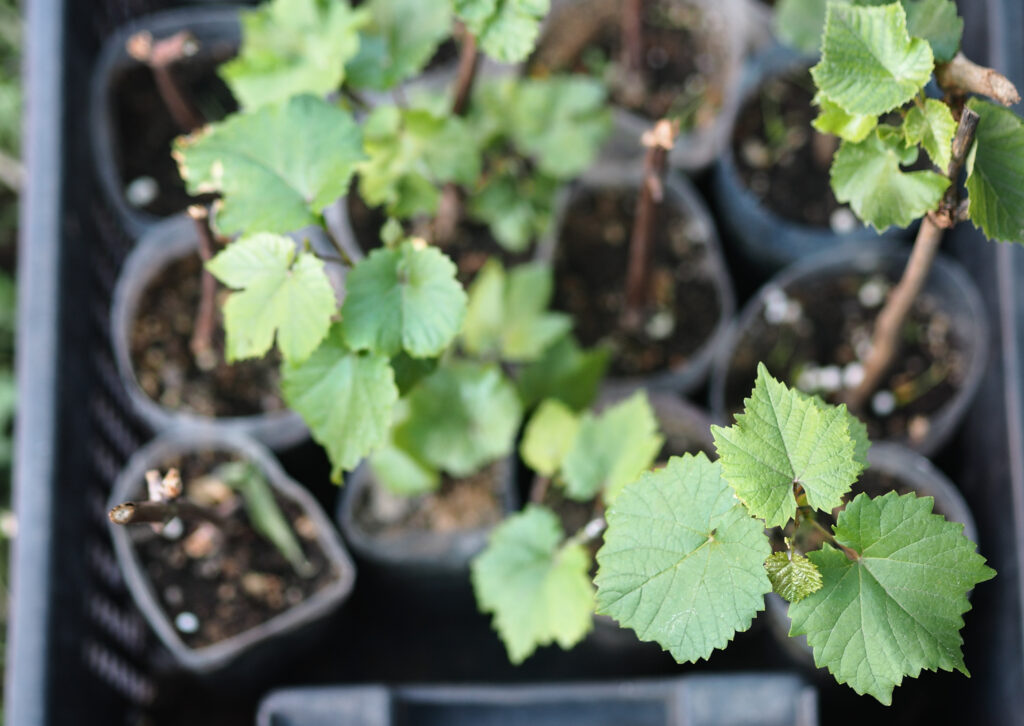
Grapes are one of the easiest plants to propagate at home, and they readily root from either hardwood or greenwood cuttings. All you need is a few inches of grapevine, trimmed to include viable buds, and you’re well on your way to growing grapes from cuttings.
Each year, grapes need to be pruned back in the late fall and winter to ensure a good crop the following year. Those cuttings are often thrown away, but with just a bit of effort, you can turn those discards into hundreds of new plants.
In many cases, just taking a dormant cutting with a few buds attached and sticking it in the ground will suffice to start a whole new plant.
While propagating grapes from hardwood cuttings is by far the easiest and most economical way, there are five different ways to successfully propagate grapes. I’m going to take you through all 5 methods, and explain why you would choose each method.
The five ways to propagate grapes include:
- Hardwood Cuttings – Using dormant wood pruned off in the fall or winter.
- Greenwood Cuttings – Best used in the growing season to multiply plants quickly.
- Grafting – Used by vineyards when a specialized rootstock is required for disease resistance.
- Layering – Used to fill in blank spots in a row or by home gardeners to expand a grape patch.
- Growing from Seed – Not used commercially because grape varieties don’t come true to seed, but it can be a fun to experiment and create new varieties.
Growing Grapes from Cuttings
Since grapes are prolific growers, it’s easy to get a hold of cuttings. In the growing season, when the plants are actively putting out new shoots they’re called “greenwood” cuttings.
During the offseason, when plants are dormant, you’ll be growing grapes from “hardwood” cuttings.
Both methods have their benefits, but growing grapes from hardwood cuttings is the most common method since grapes are generally pruned while dormant.
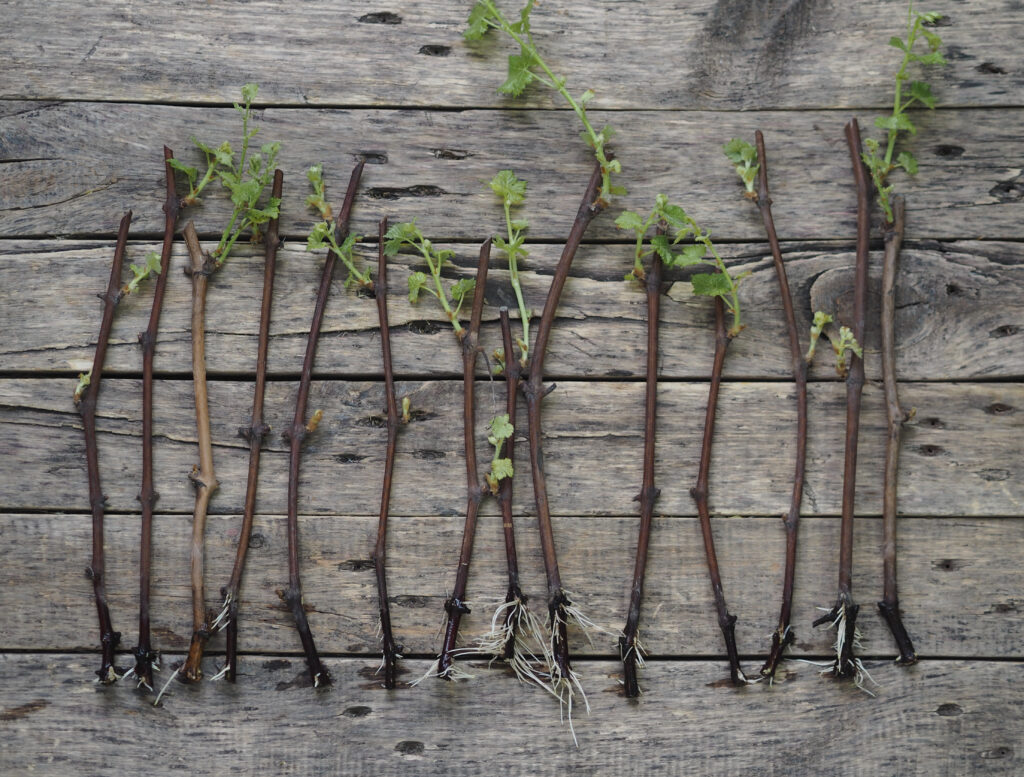
How to Grow Grapes from Hardwood Cuttings
Hardwood propagation is the most common method, though there are a select few types of grapes that cannot be propagated using hardwood cuttings, like muscadine grapes.
Each year during the dormant season, grapes should be pruned to ensure a healthy crop the following year.
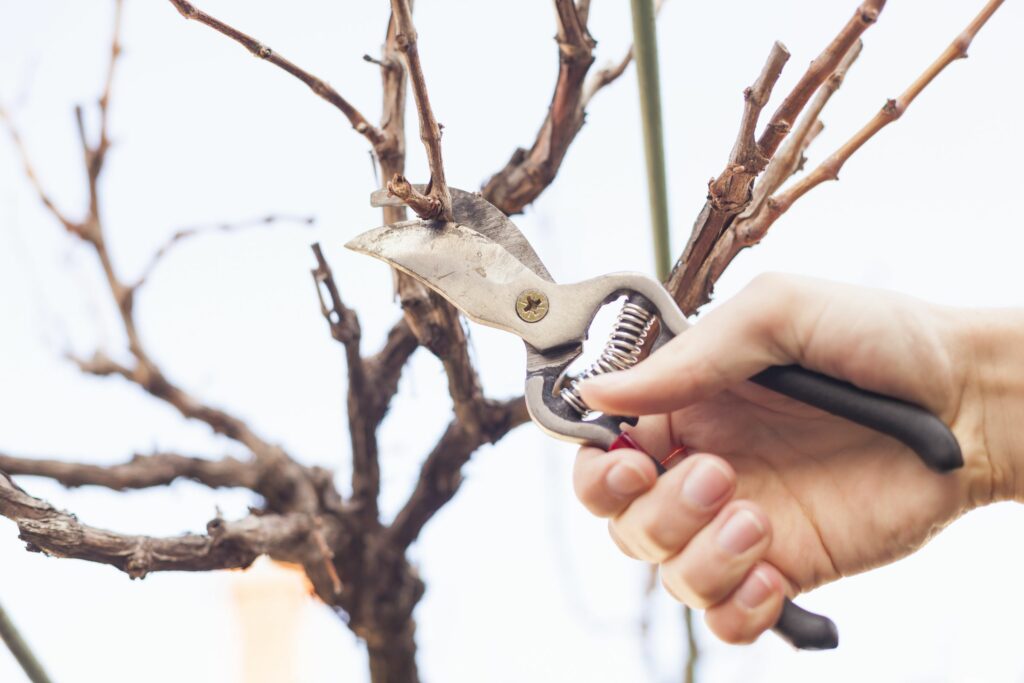
Grape vines can get leggy, and if the ratio of top wood to roots is too high, then the roots will not be able to feed all the grapes.
By pruning the vines, you ensure that the grapes produced are large, healthy and sweet.
The discarded cuttings from a single vine can be used to produce dozens of new plants each year.
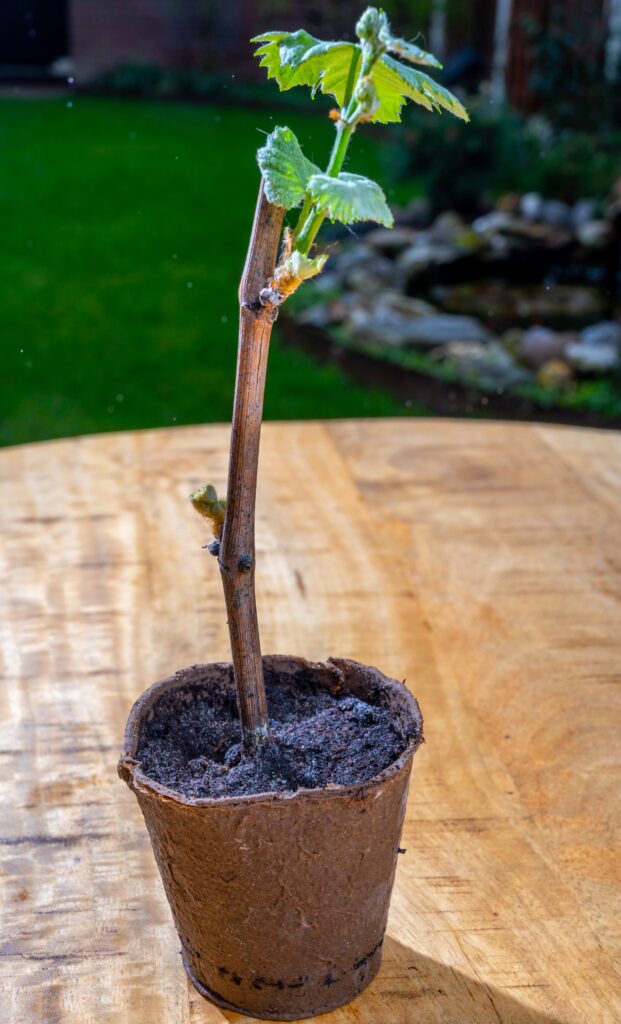
Cuttings should be 12-18 inches long, with at least 3 buds and are taken from dormant plants in the fall or winter. The hardwood cuttings are stored in a cold moist environment until the beginning of the growing season.
Shortly before the beginning of the growing season, the grape cuttings are either calloused to induce root growth or simply dipped in rooting hormone and placed in the soil.
Callusing helps prepare grape cuttings for successful rooting by forming a protective layer of tissue at the cut end.
To callus your cuttings, place them in a warm, humid environment (around 65-75°F) and keep the cut ends moist. This process usually takes 2-4 weeks, during which a hard, light-colored tissue will form at the base. Once callused, the cuttings are ready for planting in soil or treating with rooting hormone to encourage further root development.
For better results, dip them into rooting hormone before planting them 2 to 3 inches deep in moist potting soil.
Keep the soil moist, and you should see sprouts within a few weeks. Allow your cuttings to get established and firmly rooted in pots before transplanting them outdoors in the early to mid-summer.
Cuttings using dormant wood should have an 80% or greater success rate.
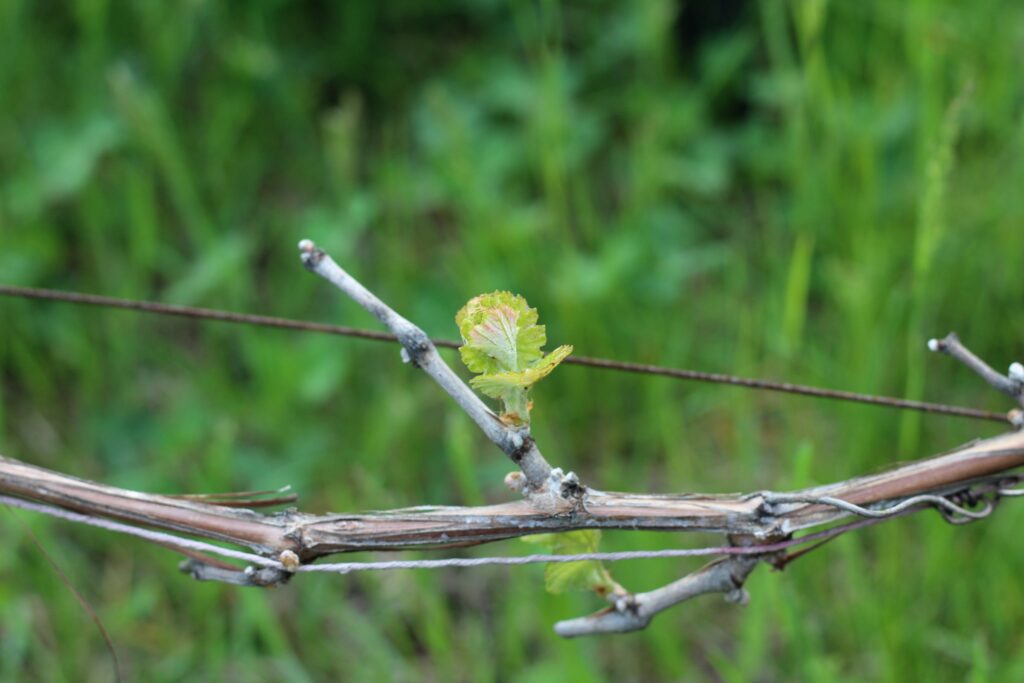
Growing Grapes from Greenwood Cuttings
Greenwood cuttings, or cuttings from actively growing vines, can also be used for propagation. Greenwood cuttings have the potential to dry out and are a less reliable method for beginners.
There are a few reasons why you might choose to propagate from greenwood cuttings:
- You want to begin propagation and it’s the summer
- A friend or neighbor offers you greenwood cuttings during the growing season
- You want to propagate a lot of grapes in a single year (once established and growing you can take cuttings from your cuttings and produce literally thousands of individual plants in a single year)
- You’re trying to grow a type of grape that doesn’t grow successfully from hardwood cuttings. Some examples include muscadine grapes (Vitis rotundifolia) or pigeon grapes (Vitis aestivalis) which have a 1-2% success rate from dormant cuttings but roughly 70% success rate from green cuttings)
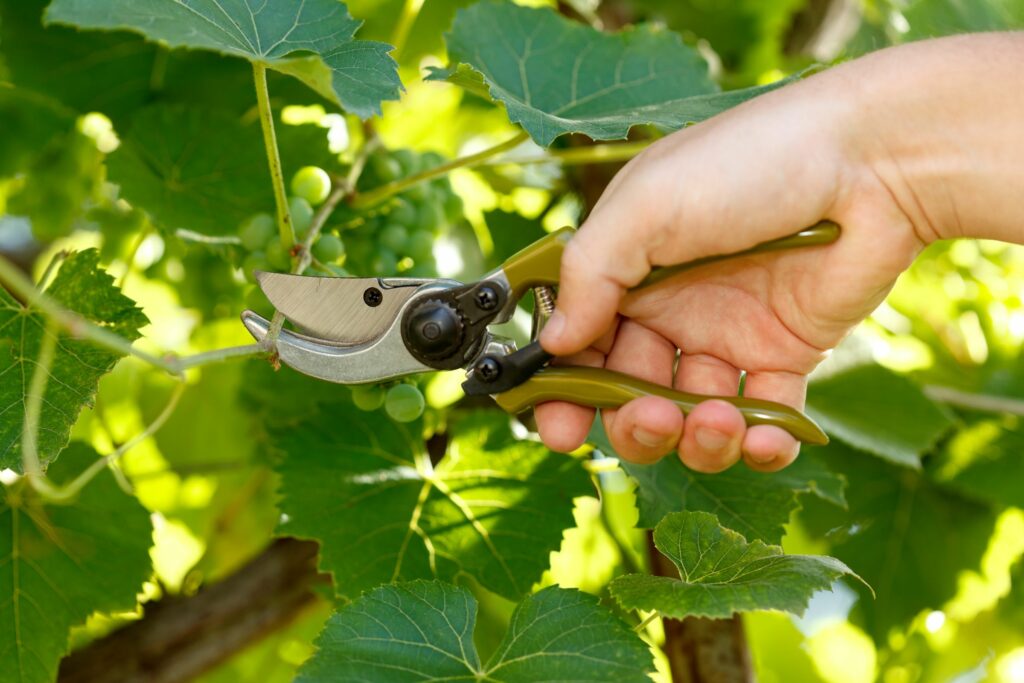
Cuttings about 4-6 inches long should be taken during the late spring until late summer from healthy grapevines.
All but a single leaf is removed to minimize water loss through the leaf pores. Dip the cut end in rooting hormone, and plant the greenwood cutting in potting soil. Keep your plant in a warm, humid environment.
Grape plants started from greenwood cuttings should begin to develop roots in 1-2 weeks.
Propagating Grapes by Layering
Layering is a method where a portion of a vine is bent to the ground, buried in soil, and allowed to root while still attached to the parent vine.
It’s a quick way to produce a few new vines during the growing season, and maybe the easiest method for the home gardener just wanting 2 or 3 new plants.
Layering is occasionally used in a commercial setting to use a neighboring vine to replace a dead vine within a row.
Choose a parent grape plant and bend a young, still flexible 1 to 3-year-old vine near the ground level until it reaches the ground.
Bury a portion of the vine beneath the soil, ensuring that you bury at least 1 node. The nodes are where new roots are most likely to form when buried. Make sure that the end of the vine is left above ground to continue growing.
The new grape plant should form roots within a few months and can be separated from the parent plant once it is well-rooted.
Propagating Grapes by Grafting
Grafting is typically used by commercial growers, as grapes readily root from cuttings. There are occasions when a commercial grower has a particularly desirable grape variety and wants to establish them on a more vigorous or disease-resistant rootstock.
Grafting can also be a good way to quickly replace an established vine with a more desirable variety. If you have an established grapevine but don’t like the taste, cut it back to the ground and graft on new dormant grape wood.

This process is a lot like propagating from hardwood cuttings, but instead of placing the cutting in the ground, you’re taping it onto a cut portion of an existing grapevine.
Use grafting tape to attach the cut end of your new grape cutting to an established root.
Growing Grapes from Seed
Grapes can be propagated from seed, but they will not be identical to the parent plant.
Growing grapes from seed isn’t usually recommended because the resulting vines may not have the same characteristics as the parent plant.
Grapes are typically propagated through cloning (using cuttings) to ensure the new plants are genetically identical to the parent. When you plant grape seeds, they’re likely be somewhat like the parents, but they can vary considerably. Just as children only resemble their parents, grape seedlings may be bitter when the parent is sweet.
Growing grapes from seed is an important tool for grape breeders and those interested in developing their own variety of grape. It can also be a fun experiment for the home gardener, because you never quite know what you’ll get.
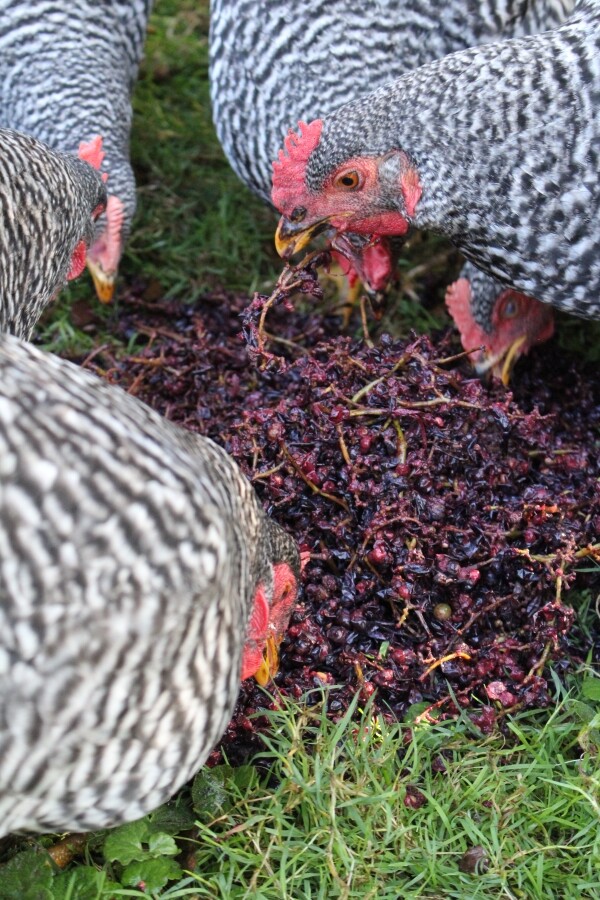
Grape seeds can be collected from seeded grapes, cleaned, and stored in a moist paper towel or directly in soil in the refrigerator for 3 months. After cold stratification in the fridge, the grape seed can be planted in the spring and will germinate into new plants.
Propagating Plants
I’ve presented 5 methods for propagating grapes, but I’d recommend that you try growing grapes from cuttings, preferably hardwood cuttings as that method is the most dependable.
You can also use the hardwood cutting method to propagate a number of other plants, and many varieties have 80-99% success rates. We grow sea buckthorn from cuttings and have had near 100% success rates.
Likewise, it’s incredibly easy to grow elderberries from cuttings.
Growing blueberries from cuttings is a bit trickier, but success rates are still reasonably high. Blueberry plants are incredibly expensive at nurseries, so it’s worth the effort even with a somewhat lower success rate.
Perennial Growing Guides
Looking for more growing guides? Read on…
- Growing Strawberries from Seed
- Growing Rhubarb from Seed
- Growing Asparagus from Seed
- How to Plant Asparagus
- Growing Garlic as a Perennial
- 30+ Perennial Vegetables
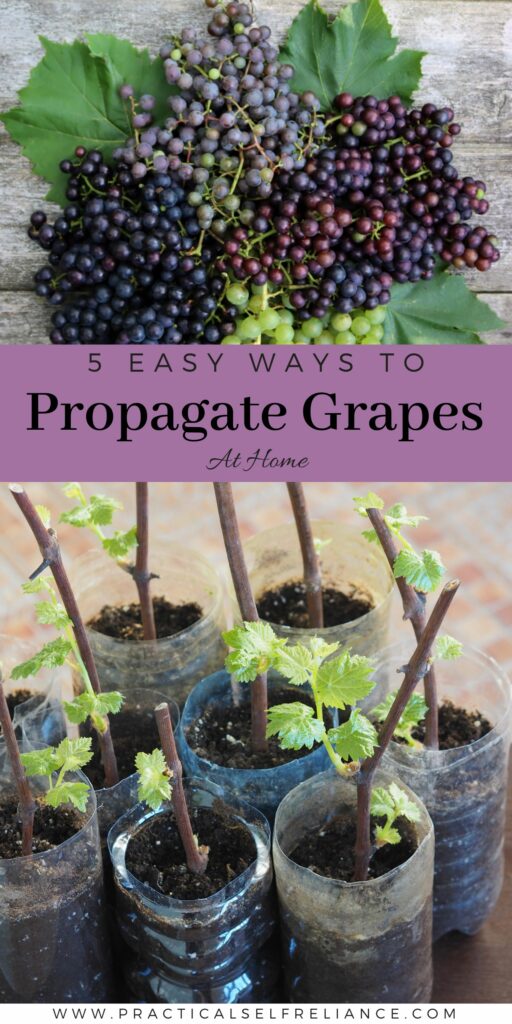
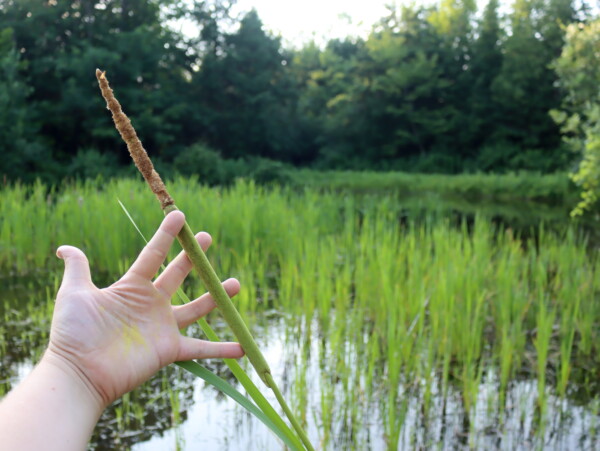

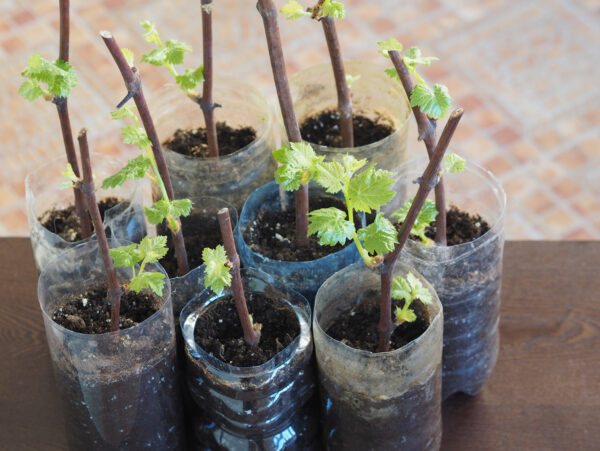
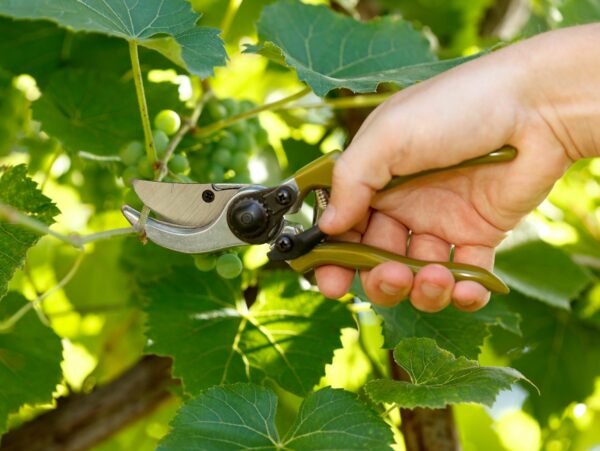
Sort of stumbled across you while investigating grape propagation. Glad I did! You covered the subject like a rug!
Looking forward to more.
Thanx!
Lovely, so glad it was helpful to you!